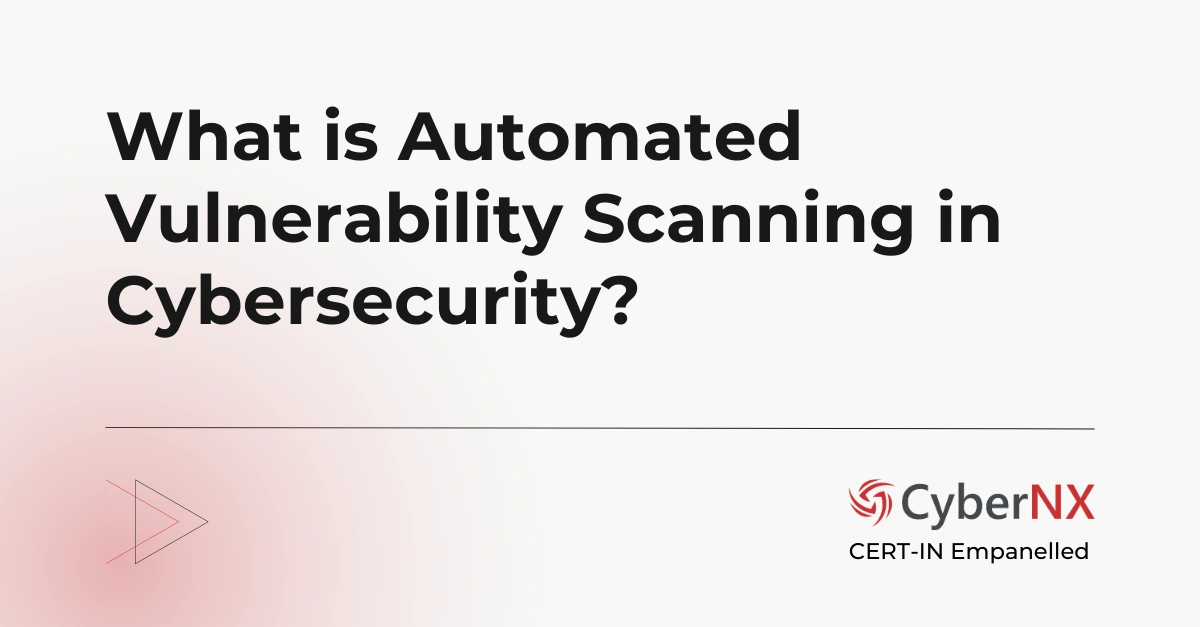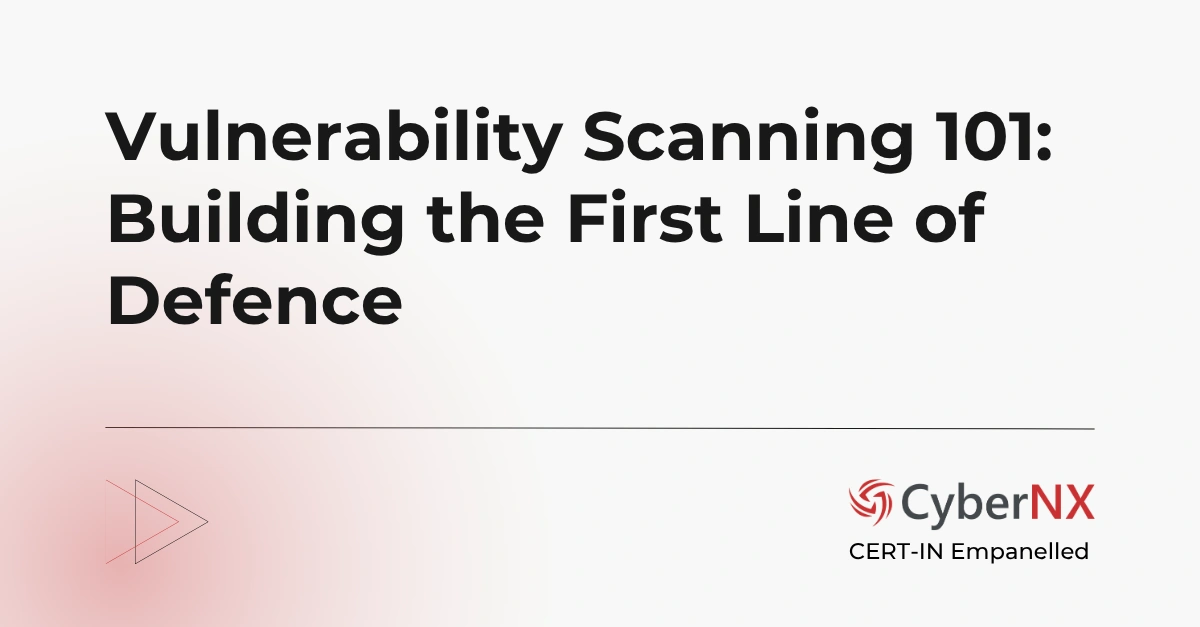“Are you confident in your cybersecurity?”
For CISOs, CXOs, and IT Managers, that’s the million-dollar question. Understanding the nuances of security testing is paramount for them. Two critical techniques often discussed are Vulnerability Assessment and Penetration Testing. While both aim to bolster security, they serve distinct purposes.
This blog post will clarify the difference between vulnerability assessment and penetration testing. Plus, it will explain how and when each should be employed for a robust security strategy.
Vulnerability Assessment vs Penetration Testing (VA/PT)
Vulnerability Assessment and Penetration Testing (VAPT) is a proactive security testing approach that identifies and exploits vulnerabilities in your IT infrastructure. This exercise is carried out so that system weaknesses can be exploited by malicious actors. The primary purpose of VAPT is to uncover security weaknesses and recommend actionable remediation measures. This proactive approach helps in preventing potential data breaches and cyberattacks.
It combines two distinct processes – Vulnerability Assessment (VA) and Penetration Testing (PT).
Want to learn everything about VAPT service, check out our guide on VAPT!
What is Vulnerability Assessment?
A vulnerability assessment is a systematic process of identifying and documenting security weaknesses within a system, network, or application. Think of it as a comprehensive health check for your digital infrastructure.
- Definition: A vulnerability assessment scans for potential weaknesses, like outdated software, misconfigurations, or missing patches.
- Key Goals: Identify vulnerabilities, prioritize them based on severity, and provide recommendations for remediation.
- How it Works: Automated tools scan systems and applications, comparing them against known vulnerability databases. Manual reviews and interviews may also be conducted.
- Examples of Tools: Nessus, Qualys Guard, OpenVAS.
What is Penetration Testing?
Penetration testing, often called “ethical hacking,” takes a more aggressive approach. It simulates real-world cyberattacks to uncover vulnerabilities and assess their exploitability.
- Definition: Penetration testing attempts to exploit identified vulnerabilities to determine the potential impact of a successful attack.
- Key Goals: Discover exploitable vulnerabilities, assess the potential damage an attacker could inflict, and provide actionable recommendations for strengthening defenses.
- How it Works: Certified security professionals (like those at CyberNX Technologies, a CERT-In empanelled VAPT service provider) use various techniques to mimic real-world attacks, including social engineering, network intrusion, and application exploitation.
- Examples of Tools: Metasploit, Burp Suite, Wireshark.
What is the Difference: Vulnerability Assessment vs Penetration Testing
Here is a quick glance at the differences between the two cybersecurity practices.
| Parameter | Vulnerability Assessment | Penetration Testing |
| Purpose | Identify and document vulnerabilities. | Exploit vulnerabilities and assess their impact. |
| Main Goal | Discover potential weaknesses. | Determine exploitability and potential damage. |
| Focus Area | Entire infrastructure (systems, networks, applications). | Specific systems, applications, or attack vectors. |
| Scope | Broad, comprehensive. | Narrow, focused. |
| Approach | Proactive, broad scan. | Reactive, targeted attack simulation. |
| Frequency | Regular, ongoing monitoring. | Periodic, targeted testing. |
| Depth of Testing | Superficial, identifies potential weaknesses. | Deep, explores how vulnerabilities can be exploited. |
| Methodology | Automated scanning, manual review. | Manual testing, social engineering, exploitation. |
| Outcome | Report of identified vulnerabilities. | Report detailing exploited vulnerabilities and potential impact. |
When to Use Vulnerability Assessment vs Penetration Testing?
Knowing when to use each technique is critical for a robust security posture.
Vulnerability Assessment Use Cases:
- Ongoing Monitoring: Regular vulnerability assessments provide a continuous view of your security posture, allowing you to identify and address emerging threats promptly.
- Compliance Needs: Many regulations and industry standards require regular vulnerability assessments to ensure compliance.
- Broad Vulnerability Coverage: Vulnerability assessments are ideal for gaining a comprehensive understanding of your organization’s overall security posture.
Penetration Testing Use Cases:
- Realistic Attack Simulation: Penetration tests provide a real-world view of how an attacker might target your systems, allowing you to identify weaknesses that automated tools might miss.
- Critical Infrastructure: Penetration testing is essential for protecting critical systems and infrastructure from targeted attacks.
- Testing New Systems/Changes: Before deploying new systems or making significant changes to your infrastructure, penetration testing can identify potential security risks.
- Response Evaluation: Penetration testing can help evaluate the effectiveness of your incident response plan.
How do Vulnerability Assessment and Penetration Testing Work Together?
Vulnerability assessment and penetration testing are not competing security strategies; they are complementary techniques. When used together, they provide a comprehensive and robust approach to cybersecurity. They address different aspects of security testing and offer unique insights into an organization’s security posture.
Complementary Roles: Broad Scan vs. Targeted Attack
- Vulnerability Assessment (VA): Think of a VA as a comprehensive health check for your IT infrastructure. It uses automated tools and manual analysis to scan systems, networks, and applications for known vulnerabilities, misconfigurations, and other security weaknesses. The goal is to identify a wide range of potential risks, providing a broad overview of your security landscape. Vulnerability Assessment answers the question: “What vulnerabilities exist in my systems?”
- Penetration Testing (PT): PT takes a more targeted and aggressive approach. It simulates real-world cyberattacks to exploit the vulnerabilities identified in the VA (and sometimes even uncovers new ones). Ethical hackers, mimicking malicious actors, attempt to penetrate your defenses and gain unauthorized access. PT answers the question: “How can these vulnerabilities be exploited, and what is the potential impact?”
The key difference lies in their scope and depth. VA provides a broad overview of potential weaknesses, while PT delves deep into the most critical ones to assess their exploitability.
Phased Approach: From Discovery to Exploitation
A common and effective approach is to use VA and PT in a phased manner:
- Phase 1: Vulnerability Assessment: Begin with a VA to establish a baseline understanding of your security posture. This will reveal a range of potential vulnerabilities across your systems and applications.
- Phase 2: Prioritization and Scoping: Analyze the results of the VA and prioritize the identified vulnerabilities based on their severity, potential impact, and likelihood of exploitation. This helps focus the PT effort on the most critical risks. You also determine the scope of the penetration test – which systems or applications will be targeted.
- Phase 3: Penetration Testing: Conduct a PT, focusing on the prioritized vulnerabilities. The penetration testers will attempt to exploit these weaknesses, simulating real-world attack scenarios. This phase reveals how an attacker could gain access, what data they could steal, and what damage they could inflict.
- Phase 4: Reporting and Remediation: Both the VA and PT generate detailed reports outlining the identified vulnerabilities, their potential impact, and recommended remediation steps. These reports provide actionable insights for strengthening your defenses.
- Phase 5: Continuous Improvement: Security is an ongoing process. Regular VAs and periodic PTs are essential for maintaining a strong security posture and adapting to evolving threats.
The Benefits of Combining VA and PT
- Comprehensive Security View: Get 360-degree view of your security vulnerabilities, from the broad landscape to the most critical weaknesses.
- Prioritized Remediation: Focus your resources on addressing the most critical risks first.
- Realistic Threat Assessment: Understand the potential impact of a successful breach.
- Improved Security Posture: Strengthen your defenses and reduce your risk of cyberattacks.
- Compliance and Best Practices: Comply with industry regulations and security best practices.
Understanding the difference between vulnerability assessment and penetration testing services is essential for any organization looking to strengthen its cybersecurity defenses. Vulnerability assessments provide a broad overview of potential weaknesses, while penetration testing simulates real-world attacks to uncover exploitable vulnerabilities. By incorporating both techniques into your security strategy, you can gain a comprehensive understanding of your security posture and effectively mitigate risks.
Contact CyberNX Technologies, a CERT-In empanelled VAPT provider, to learn how we can help you implement a robust vulnerability management program.
FAQS
Why do I need both a vulnerability assessment and penetration testing?
They serve different but complementary purposes. VA gives you a broad view of your security posture, while PT provides a deep dive into the most critical vulnerabilities. Using both gives you a comprehensive understanding of your risks.
Which one should I do first: vulnerability assessment or penetration testing?
Generally, it’s best to start with a vulnerability assessment. This helps identify and prioritize potential weaknesses, allowing you to focus your penetration testing efforts on the most critical areas.
Who should conduct vulnerability assessments and penetration tests?
Ideally, both should be performed by qualified security professionals. For penetration testing, it’s often best to engage an independent, certified third-party, like CyberNX Technologies, a CERT-In empanelled VAPT provider, to ensure objectivity and expertise.
Can a penetration test find vulnerabilities that a vulnerability assessment missed?
Yes, sometimes. Penetration testers may uncover vulnerabilities that automated tools missed or identify vulnerabilities arising from the interaction of multiple systems.
How do I use the results of a vulnerability assessment and penetration test?
The reports from both tests provide actionable insights for improving your security posture. Prioritize remediation efforts based on the severity and potential impact of the identified vulnerabilities.
How can CyberNX Technologies help me in VAPT?
CyberNX Technologies is a CERT-In empanelled VAPT provider, ensuring high standards and credibility. CyberNX Technologies offers a wide range of VAPT services, including vulnerability assessments, penetration testing, and security audits. Contact us to discuss your specific needs.






